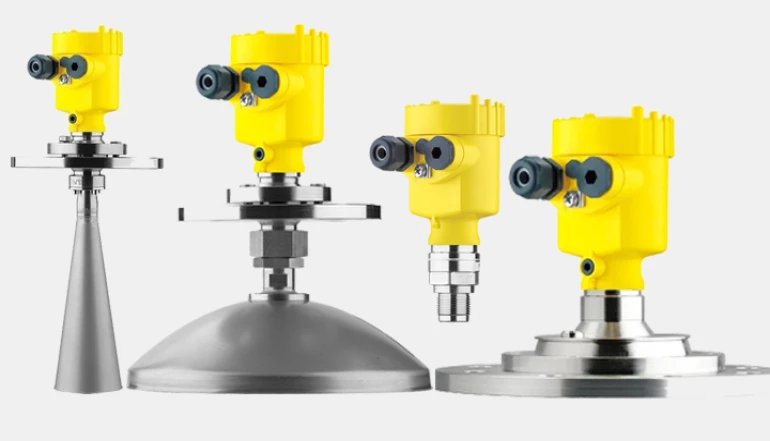Radar Level Transmitters: Advancing Precision in Level Measurement
Radar level transmitters are sophisticated instruments utilized for accurately measuring the level of various substances, including liquids, solids, or powders, within tanks, silos, or containers. They operate on the principle of radar technology, emitting electromagnetic waves that bounce off the surface of the substance being measured, allowing for precise level calculations.
Key Components and Operation:
-
Antenna:
The antenna is a fundamental component of the radar level transmitter. It emits radar waves in the form of electromagnetic pulses directed toward the substance's surface.
-
Transmitter:
The transmitter generates and sends out the radar signals through the antenna. These signals travel at the speed of light and strike the substance's surface, initiating the measurement process.
-
Reflected Signal:
Once the radar signals hit the substance's surface, they bounce back or are reflected towards the radar level transmitter.
-
Receiver:
The receiver within the radar level transmitter detects the reflected signals. The time taken for the signals to return is measured accurately.
-
Signal Processing:
Advanced signal processing techniques are employed to interpret the time delay between signal emission and reception. This time delay, in turn, is used to calculate the distance or level of the substance in the container.
Key Advantages of Radar Level Transmitters:
-
Accuracy: Radar level transmitters provide highly accurate and reliable level measurements, even in challenging industrial environments with extreme temperatures, pressures, or varying substance properties.
-
Non-Contact Measurement: They offer non-contact level measurement, eliminating the need for direct contact with the substance being measured, which is crucial for certain sensitive or hazardous materials.
-
Versatility: Radar level transmitters are versatile and can be used for a wide range of substances, including liquids, solids, powders, and even in dusty or vapor-filled conditions.
-
Long Range Capabilities: These transmitters can measure levels at long distances, making them suitable for tall storage tanks and large containers.
-
Minimal Maintenance: With robust designs and minimal moving parts, radar level transmitters require minimal maintenance, contributing to cost-effectiveness and operational efficiency.
Applications of Radar Level Transmitters:
-
Oil and Gas Industry: Monitoring levels of various hydrocarbons, such as crude oil, refined products, or chemicals in storage tanks.
-
Water and Wastewater Management: Measuring water levels in reservoirs, treatment plants, or sewage systems.
-
Chemical Processing: Accurate measurement of chemicals in manufacturing, ensuring precise quantities for production.
-
Food and Beverage Industry: Monitoring levels of ingredients, liquids, or bulk materials in food processing and production.
-
Pharmaceuticals: Measuring levels of liquids and raw materials used in pharmaceutical manufacturing.
Radar level transmitters have revolutionized the way industries measure and monitor substance levels, offering unparalleled accuracy, reliability, and versatility across a myriad of applications. Their ability to provide precise measurements in challenging conditions makes them a fundamental tool in modern industrial processes.


